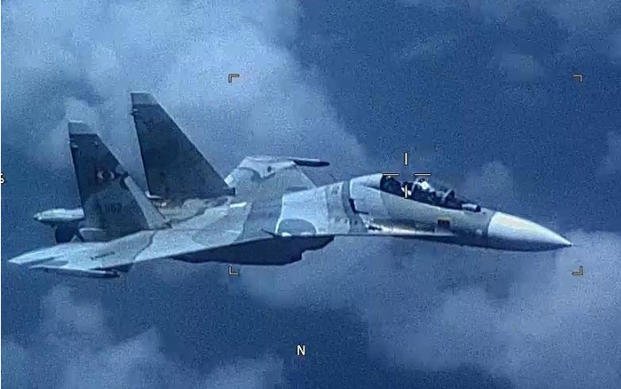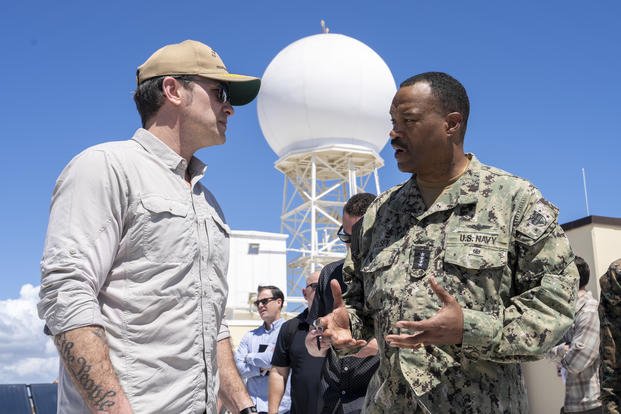The 10,000 U.S. troops now operating in the Caribbean were sent to interdict drug boats. But Venezuelan President Nicolás Maduro's Sept. 30 state of external emergency fundamentally changed what they're facing: a military on full wartime alert, equipped with Russian air defenses and anti-ship missiles, backed by what Maduro claims is a militia of over 8 million members.
For American commanders, that means every operation and incident now happens under the threat of Venezuelan retaliation — a situation the current force is not ready to handle.
Russian Missiles and Air Defense Systems Pose Threat to U.S. Navy
Venezuela can't match U.S. firepower in a conventional fight. Its 123,000-member armed forces are allegedly plagued by maintenance problems, with analysts telling The Wall Street Journal the military is “in shambles.” Their submarines and surface vessels are probably inoperable, according to experts quoted by Breaking Defense.
But Venezuela has spent billions on the weapons that could cause the most damage: Russian-built systems such as missiles and jets designed to interdict U.S. ships and aircraft.
The country operates at least 20 Sukhoi Su-30 MK2 fighters armed with Kh-31 "Krypton" anti-ship missiles. The International Institute for Strategic Studies confirmed Venezuela has both anti-ship and anti-radar versions of the Kh-31 system. These are the same missiles that forced U.S. Navy planners back in the 90s to develop countermeasures because of their speed and sea-skimming flight profile.
Venezuelan jets have already tested U.S. forces. In early September, two Venezuelan F-16s conducted close passes of the USS Jason Dunham in international waters. Defense officials described the maneuver as “highly provocative” and a “show of force.” The Pentagon warned Venezuela against further interference with counternarcotics operations.
On the ground, Venezuela has positioned several S-125 Pechora-2M, Buk-M2E and thousands of Igla-S surface-to-air missile systems near oil facilities, radar sites and naval approaches. These systems, while aging, remain capable of threatening any helicopters and lower-flying aircraft that U.S. forces would need for any operations beyond long-range strikes.
Perhaps most significantly, Venezuela has deployed both Russian radar arrays and Chinese communication relays, creating what military planners call a contested electromagnetic spectrum, according to Army Recognition. That means U.S. aircraft and ships can't assume they'll operate undetected or that their communications won't be jammed.

Venezuela Activates Millions in Militia for Territorial Defense
Maduro claims more than 8 million militia members have been activated, though experts question both the number and training quality. Even using conservative estimates of several million, Venezuela has created what amounts to just a territorial defense network spread across at least 20 of its 23 states.
The Bolivarian Militia isn't designed to fight U.S. forces conventionally. Venezuelan military planners have distributed anti-tank systems, RPGs and domestically refurbished armored vehicles throughout the militia structure. Numerous militia members, many of them middle-aged and outside the realm of physical military condition, have been spotted and photographed carrying an array of firearms from AK systems to older semi-automatic rifles.
Their strategy relies on making any U.S. ground operation face heavy resistance in cities and harsh terrain — the kind of asymmetric warfare that American forces faced in Iraq and Afghanistan.
Venezuela has recently conducted military exercises specifically designed to demonstrate this capability. In late September, these forces conducted drills in shantytowns across Caracas, showing troops how to use urban terrain against a more powerful enemy. The goal of these exercises was to show U.S. commanders that even if they can strike from a distance, any ground combat operation means urban warfare against irregular forces with a home-field advantage.
US Caribbean Deployment Lacks Forces for Full-Scale Venezuela Operations
The U.S. has deployed an overwhelming strike force: eight Navy ships including several destroyers, the cruiser USS Lake Erie, the amphibious assault ship USS Iwo Jima, a nuclear-powered attack submarine, as well as F-35 fighters in Puerto Rico and B-52 bombers that conducted show of force missions off Venezuela's coast last week, according to U.S. Southern Command.
U.S. forces in the region include Tomahawk-capable ships and submarines positioned close to Puerto Rico and the southern Caribbean — meaning U.S. cruise missiles could strike deep into Venezuela without these vessels entering Venezuelan territorial waters. They can conduct precision strikes from submarines Venezuelan forces can't detect. They can even put F-35s over Venezuelan airspace that the country's aging radars may not be able track effectively.
But analysts at the Center for Strategic and International Studies note this deployment doesn't approach the troop levels or logistics infrastructure needed to sustain ground combat operations across Venezuela's vast territory. The 10,000 troops include Marines on ships and forces in Puerto Rico, but they lack the supply chains, bases and support units for a prolonged campaign.
The force was designed for counternarcotics interdiction, not combat against an adversary with anti-ship missiles and integrated air defenses. Coast Guard detachments aboard Navy vessels can board suspected drug boats. Marines can conduct visit, board, search and seizure operations. Neither is fully equipped to operate under the constant threat of Kh-31 missile strikes or coordinated air defense fire.
Anything beyond narcotics interdictions would require reinforcements and logistical support from units based on the mainland U.S.

Venezuelan Military Exercises Increase Risk of Accidental Conflict
Maduro has militarized civilian ports, allowing the positioning of mobile air defense systems and anti-ship missiles under the legal cover of his emergency decree. He's conducting daily military exercises that position forces near the coast. Venezuelan jets continue flying near U.S. ships.
U.S. Special Operations helicopters from the elite 160th Special Operations Aviation Regiment were even spotted flying within 90 miles of Venezuela's coast in early October, according to The Washington Post.
None of Venezuela’s recent actions constitute a threat that would justify a full American military response. But all of it increases the chance of an incident that could lead to significant escalation from both sides.
A Venezuelan jet conducting a routine pass could be misread as an attack run. A U.S. ship's defensive systems could automatically engage an approaching aircraft. A Venezuelan mobile missile battery could launch on a U.S. jet, forcing retaliation against targets in Venezuelan territory — exactly the expansion of operations that would require forces and supplies the U.S. doesn't currently have in place.
The recent capture of two survivors from a strike on an alleged drug vessel also shows the operational complexity. Trump announced Saturday that the two survivors — from Ecuador and Colombia — are being returned to their home countries for prosecution. The decision came after legal experts questioned under what authority the U.S. military could hold the individuals.
Meanwhile, the commander overseeing these operations, Adm. Alvin Holsey of U.S. Southern Command, announced his retirement just one year into his tenure. Sources told CNN that tensions between Holsey and Defense Secretary Pete Hegseth centered on the pace of operations and concerns about their lawfulness — suggesting even the theater commander questioned what his forces were being asked to do.
Adding another layer to the operations at sea, Trump confirmed on Oct. 15 that he authorized the CIA to conduct covert operations inside Venezuela, citing the flow of migrants and drugs from the country as the justification. When asked whether the CIA had authority to target Maduro directly, Trump called it “a ridiculous question for me to answer” but added, “I think Venezuela is feeling heat.”

What Happens Next?
U.S. forces in the Caribbean now face a military hurdle as they operate under rules designed for law enforcement against an adversary preparing for war. They have overwhelming firepower but limited logistics for sustained operations. They can strike from a distance but lack the forces for direct action in Venezuelan territory. And they're doing all of this while Venezuela positions their weapons most likely to inflict mass casualties on American ships and aircraft.
The Pentagon insists these operations remain focused on counternarcotics, even as CIA operations are confirmed in the region, Navy ships bomb vessels off Venezuela’s coast, and special forces stage nearby. But every Venezuelan military exercise, every fighter jet patrol, and the recent militia activation blurs that line. U.S. forces aren't fighting Venezuela — but they're operating as if they might need to, against defenses specifically designed to make that fight a costly one.














